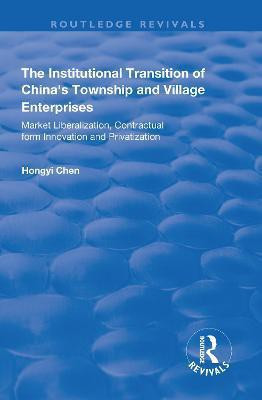The Institutional Transition of China's Township and Village Enterprises(English, Paperback, Chen Hongyi)
Quick Overview
Product Price Comparison
This title was first published in 2000. This work provides a new insight into china's township and village enterprises (TVEs). It views the governance structure of TVEs as effectively combining the comparative advantage of local government officials in external management and of dual firm managers in internal management to overcome imperfections in both market and government during the transitional period. Through extensive field investigation analysis and case studies, this work shows that the governance structure of TVEs has been evolving during the past fifteen years. To adapt to the changing environment, TVEs have continuously innovated firm contractual form from a government official dominant fixed-wage form to a partnership style profit-sharing form, then to a privatization oriented fixed-rent form. This work develops a complete model to explain how the central government's partial reform efforts in market liberalization have become the driving force to induce the contractual form innovation, and to explicate how heterogeneity in firms' technical structures and in local economic settings may affect local government's decisions regarding contractual form innovation. Using the author's unique data set, the model simulations predict that the development in the whole market system will result in the diffusion of contractual form innovation and lead to an 'induced privatization' in this sector. The following empirical studies show this to be a powerful prediction and the progress toward such 'induced privatization' can be expected in China in near future. This research work provides a rich empirical study on China's institutional transition towards a market system. It explains how a bottom-up endogenous, instead of top-down exogenous, property rights reform can be realized in transitional economies. This work will serve as a valuable reference for researchers and students in economics, economic development and institutional economics - and especially for those interested in research.


